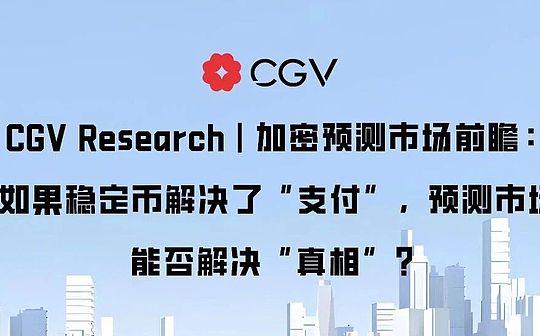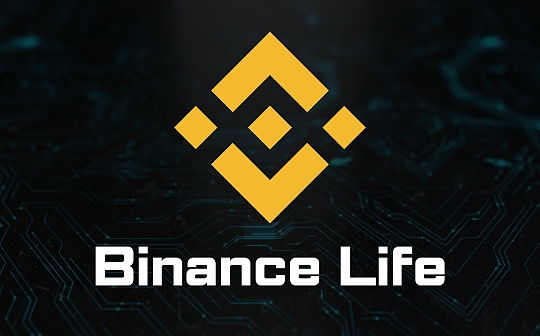
author:Prathik Desai, Source: Token Dispatch
As we move through three quarters of 2025, I thought it would be a good time to take a look back at how money is flowing into the crypto ecosystem.
While 2024 will see a massive influx of funding into Tier 1 and Tier 2 projects, developer tools, and AI products, this year’s funding will primarily be used to support payments and enterprise-grade infrastructure.
Funds that last year chased all the hot ideas are now becoming more selective, focusing on a few specific areas.The result is fewer deals, more money, and the venture capital market seems to see more clearly the value of the cryptocurrency space.
While overall funding fell year-over-year in the nine months to September, the data tells us that this may not be a bad sign for projects building in this space.
Okay, now let’s get down to business.

From January 1 to September 30, crypto venture capital investment totaled $4.09 billion across 463 funding rounds, 392 of which disclosed check amounts.That’s down 19% from the same period last year, according to Decentralized.co’s funding tracking data.Total funding during the same period in 2024 was $5.04 billion across 980 deals, 725 of which disclosed funding.
Despite the decline in total funding, the average deal size for disclosure rounds surged 50% to $10.4 million, while the median check size rose from $3 million to $4 million in 2025.As a result, the market appears calmer than the previous year, but with higher capital intensity.
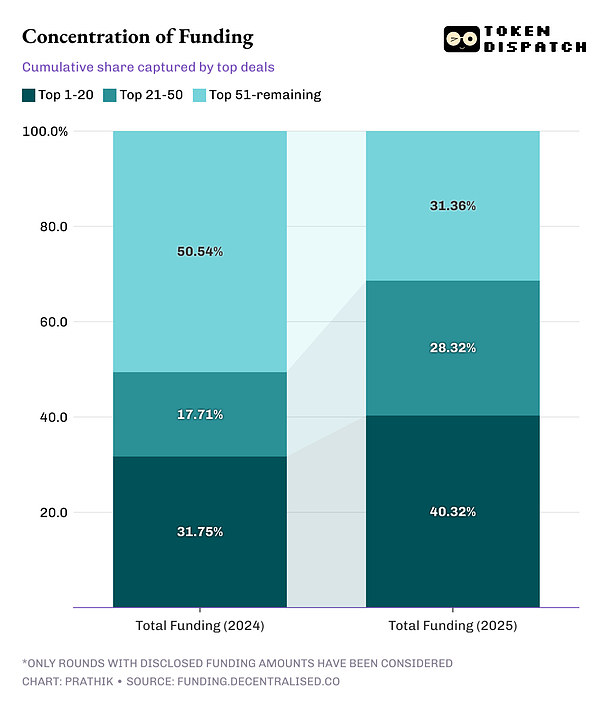
The top 20 rounds will account for 40% of all funding in 2025, compared to 32% in 2024.Zooming in to the top 50 rounds, that swells from 49% in 2024 to 69% this year.
This year’s capital flows show that the financing stage is also escalating.
The share of seed and Series A rounds declined, while the share of later-stage financing increased.About 57% of funding is invested in early-stage crypto projects (seed and series A), compared with 80% in the first nine months of 2024.
This suggests that investors are shifting risk from the idea stage to the execution stage.
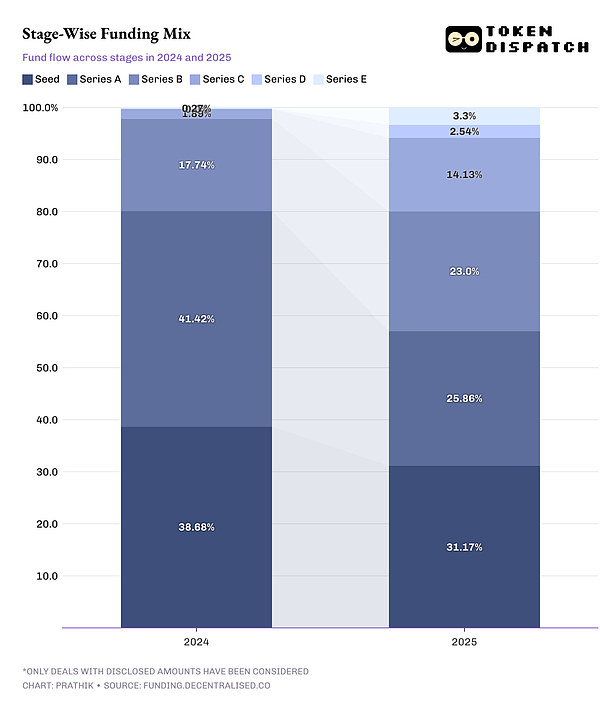
Today, venture capitalists demand evidence before investing in a project.They are choosing to double down on projects with established distribution systems and clear regulatory status, rather than new entrants.
Investing more money in later stages means fewer failures and fewer chances to get rich.Returns have leveled off, with more reliance on cash flow support.On the other hand, this could lead to a narrowing of the creative pipeline in 2026.If Series A and Seed round activity does not resume soon, it could result in less venture capital interest in the emerging space.
The concentration of capital flows indicates a change in venture capitalists’ expectations about where value will come from.
Industry data shows that the only area that is consistently a favorite among investors in 2024 and 2025 is AI.The top five fund-drawing areas in 2024 failed to attract the same amount of investor interest in 2025.
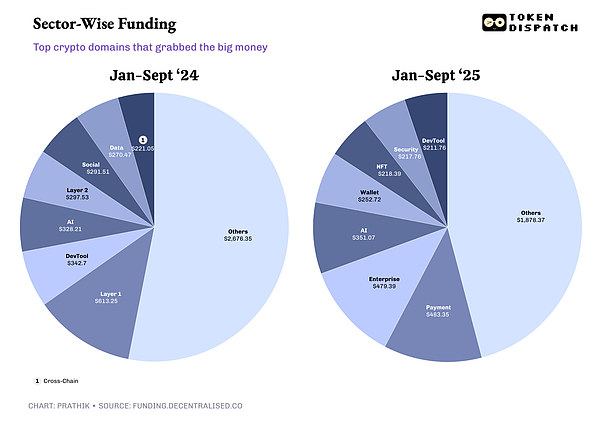
For founders, this means that if you start a business in AI, payments, enterprise infrastructure and tokenization of real-world assets (RWA), the funding is there.Outside of these areas, funding has dried up in areas such as Layer-1 and Layer-2 infrastructure, developer tools, and social, which will make up the cream of the industry in 2024.
All this conveys several key messages.
First, capital structures are tilting toward fewer but deeper lead investors.This is often seen in mature industries.As the industry gains experience with experimentation over its life cycle, more prudent and calculated investments will emerge.This brings structure to the ecosystem, helping late-stage projects, but leaves little room for new entrants with small amounts of capital.
Second, price discovery shifts from hype cycles to indicator-based moves.Investors now place bets when they see profits, rather than chasing hype.
Third, the pace slows down.Fewer new experiments are being funded, which means fewer innovations are testing market needs in new areas.New products will still appear, but are more likely to come from established companies or bootstrapped projects, such as Aster (BNB chain) and Hyperliquid (non-venture capital projects).
This new approach rewards meaningful metrics such as revenue generation and enterprise-level storytelling.It can also reveal optimism bias by highlighting the fragility of ideas.Overall, the venture capital market will become more stable as it shrinks in size.
We might want to regain some aspects of 2024, such as investment being more evenly distributed across phases and being thicker in the middle.But until then, we must accept the status quo of less investment and more money.


